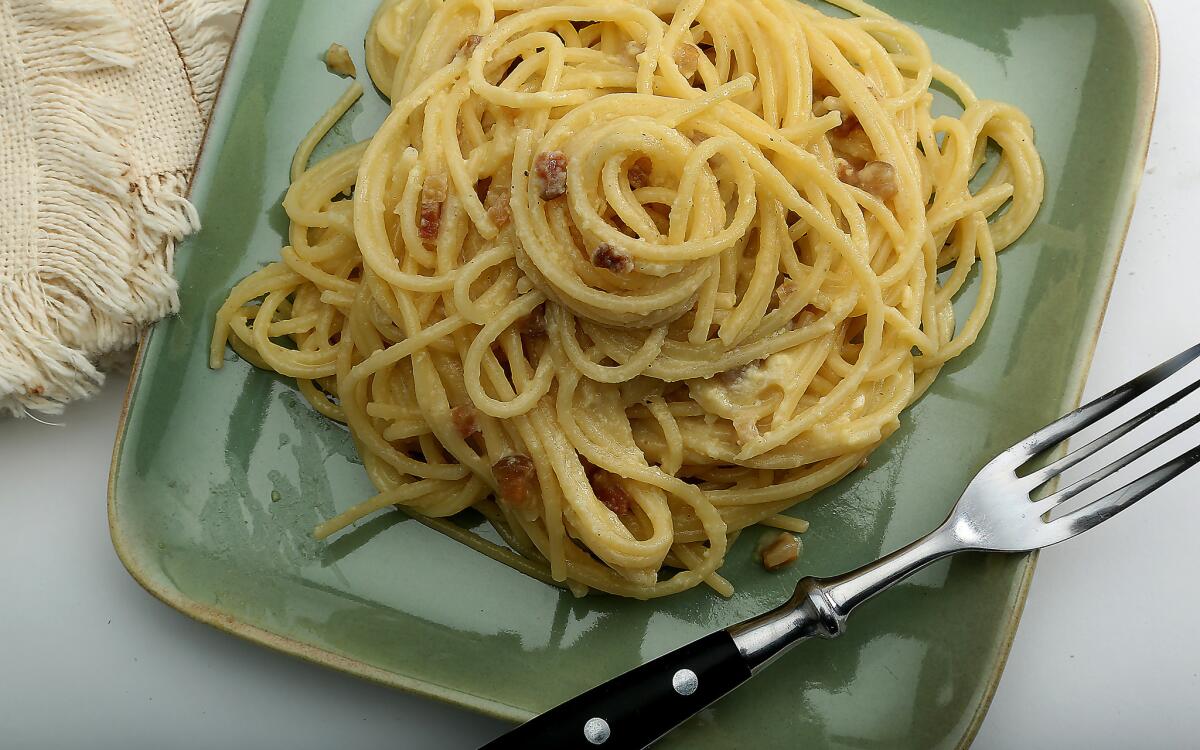Spaghetti carbonara

Spaghetti carbonara is one of the simplest dishes to make — it takes only five ingredients, not including seasoning, and is done in less time than it takes for the noodles to cook. When done right, the wonderfully creamy sauce is rich with the flavor of cured pork and cooked eggs.
The one trick I’ve found that works while still retaining the essential character of the dish is adding a little of the hot pasta cooking water if the dish starts to go wrong. If the eggs are still a little raw, the hot water will finish cooking them; if the eggs have curdled, stirring in a little water will help smooth them out.
If you can’t find guanciale, pancetta can be substituted, though it’s a bit more peppery. Use as much or as little black pepper as you like, but remember that this is at heart a rustic dish and that flowery pepper heat offsets the richness nicely.
From the story: The complicated simplicity of spaghetti carbonara
Cook the spaghetti in rapidly boiling salted water over high heat until it is just tender but with a needle-thin core of crisp.
While the spaghetti is cooking, heat the guanciale and oil in a skillet over medium heat just until the guanciale begins to brown and crisp, 2 to 3 minutes. Remove the pan from the heat, but keep it warm.
Break the eggs into a small bowl and add all of the cheese and a generous grinding of pepper. Whisk gently until smooth.
Drain the cooked pasta (reserving and keeping warm a cup of its water) and put it in the skillet with the guanciale over low heat. If it sizzles loudly, the pan is too hot; let it cool slightly. Toss quickly to mix well and coat the spaghetti with the rendered fat.
Holding the skillet slightly above but not touching the burner, pour the egg and cheese mixture in a stream into the pasta. Toss the pasta or stir it quickly with spoons to coat the spaghetti in a creamy sauce made from the lightly cooked eggs. Work quickly so the spaghetti does not get cold, or the eggs will stay raw and runny. But don’t let the pan get too hot or the eggs will curdle. If either starts to happen, you can rescue it by stirring in a little of the reserved warm cooking water.
Taste and add more salt and pepper if desired before serving immediately.
Get our Cooking newsletter.
Your roundup of inspiring recipes and kitchen tricks.
You may occasionally receive promotional content from the Los Angeles Times.
















